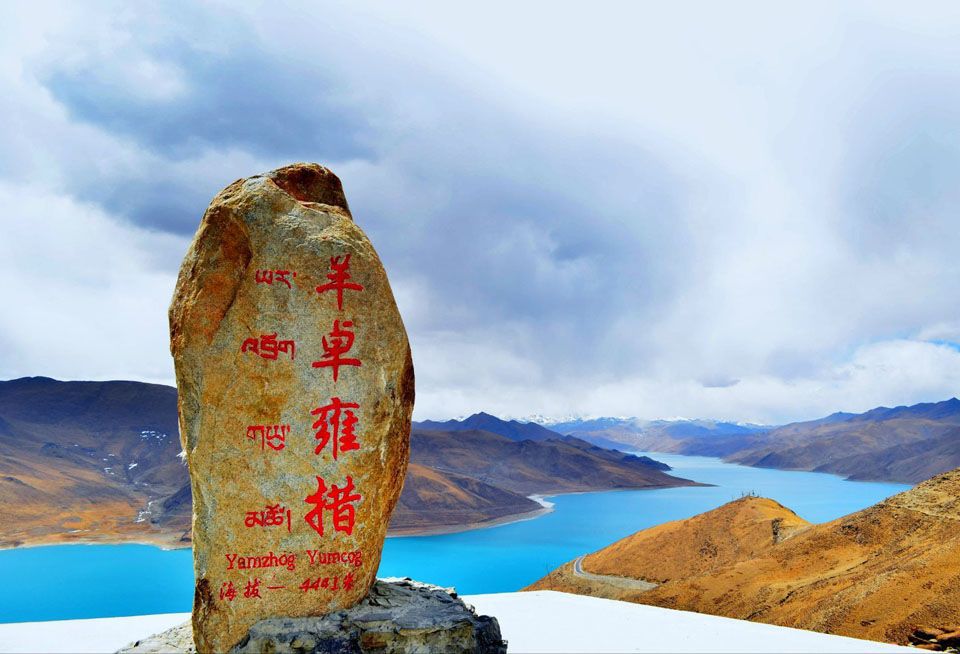On July 24, 2025, the “Shared Heritage, Shared Future” Global Chinese Media Alliance China Tour continued its immersive journey across the vast Tibetan Plateau. Against a backdrop of awe-inspiring natural beauty, media representatives from five continents transcended altitude and perception, engaging in a deeply personal encounter with nature, faith, and civilization—a spiritual experience shaped by both physical endurance and cultural reverence.
That morning, the convoy departed from the sacred city of Lhasa, winding its way into the heart of the mountains along the legendary National Highway 318. The gilded rooftops of the Potala Palace gradually faded from view through the car windows, like a silent sage bidding farewell to travelers ascending toward a new spiritual height. Outside, the rugged and expansive landscapes of the “Roof of the World” unfolded, where low oxygen and intense UV rays could not dampen the travelers’ enthusiasm. On the contrary, each deliberate step felt solemn and purposeful.
When the convoy reached the shores of Yamdrok Lake, a spontaneous hush fell over the group. Known as the “Turquoise Lake” in Tibetan, its waters shimmered with celestial clarity—so pure, it seemed unreal. Blooming fields of rapeseed painted golden tapestries along the shoreline, blending with the deep blue of the lake to create a dreamlike panorama, as if heaven itself composed a symphony of color, unveiled only for the devout.
Yamdrok is not merely a body of water—it is a lake of the spirit. In Tibetan belief, it is home to deities that govern fate. Prayer flags flutter in the wind, and mani stone piles stand silently, bearing countless blessings and hopes. In that moment, words felt superfluous. Only reverence remained, spreading across the wilderness and seeping into skin and soul.
The wheels turned once more, inching toward the snowline. A streak of icy blue in the distance drew gasps of awe—Kharola Glacier appeared, perched defiantly atop the mountain like a divine blade: sharp, silent, and sacred. Though one of Tibet’s most accessible glaciers, it commands unspoken respect. Cascading from the Nyenchen Tanglha Mountains, its ice tongue seemed like a waterfall frozen in time, suspended among desolate brown cliffs—majestic and breath-stealing.
As the media delegates, clutching oxygen canisters, took steady steps toward the glacier’s base, a light rain began to fall. Mist curled across the valley, veiling the glacier like a bashful maiden behind a sheer curtain. Then, as if nature itself sensed the group’s sincerity, the clouds parted briefly, revealing the full grandeur of the glacier—dazzling, fierce, and vast, like a silver river hurled from the heavens. Sunlight struck the icy surface, scattering glints of white fire, while the frigid air awakened a fierce warmth within every heart.
Even more striking was the glacier’s receding edge, where exposed black rock offered a sobering reminder: the marks of climate change are etched into the mountain’s flesh. Each strand of melting ice was like a tear of time, a silent warning for the future. In summer, these glacial waters flow down into Yamdrok Lake, completing the great hydrological cycle between earth and sky.

This journey was more than a test of physical limits—it was an intimate dialogue between civilization and nature. At an altitude of 5,000 meters, humanity’s vulnerability coexisted with its resilience. And in that rarefied air, Tibet revealed itself: not merely a geographical highland, but a spiritual summit.
Tibet does not need to be called sacred—it simply is. Nature needs no embellishment—it is inherently magnificent. Only with humility can one approach it and begin to comprehend its greatness and tranquil beauty.


